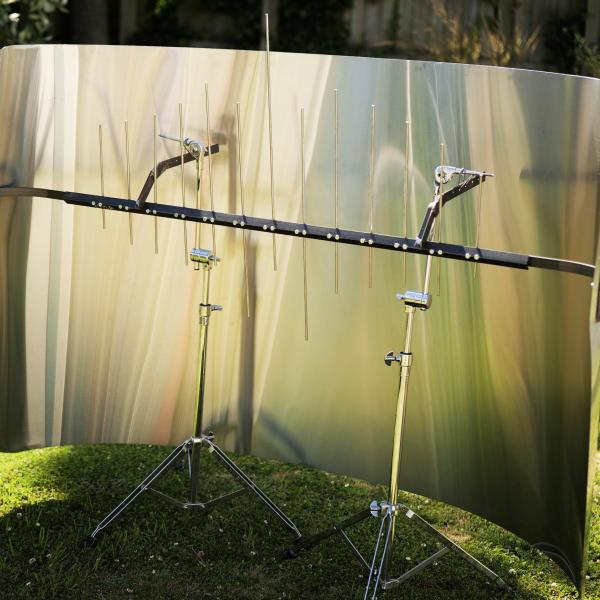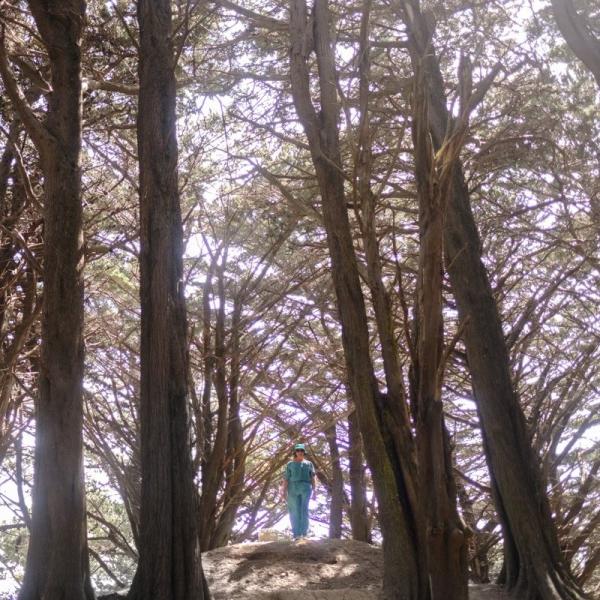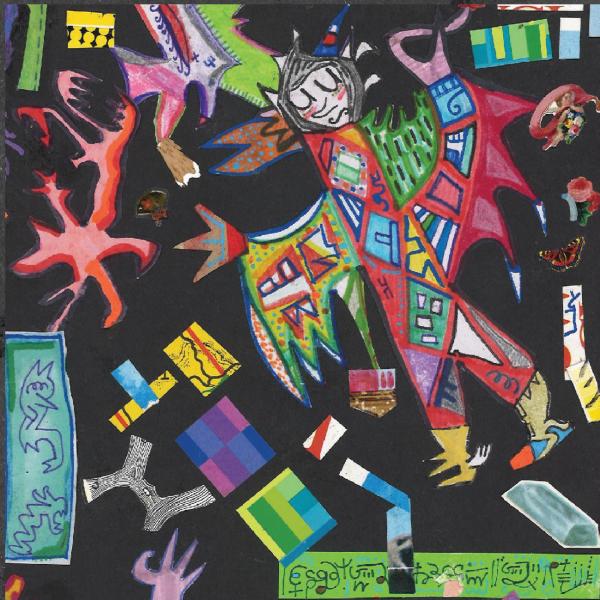Making Waves - Ioana Gordon-Smith on Edith Amituanai

Soni Taufa, Noisy Boyz
quoted in Re:News, ‘Auckland’s underground street music scene: cars, loud speakers and late-night sound battles’, Youtube, 12 August, 2021
When I first met artist Edith Amituanai, she told me that if she wasn’t an artist, she would probably be an anthropologist. At the time (more than 10 years ago), we were discussing her photographs of homes in Sāmoa. Shot low on a medium-format camera, the images held a looming, flat quality. The approach brings domestic features into the foreground: dinnerware stacked on sefe (large wall units or cabinets), framed photographs, a tv playing a cowboy movie, beaded screens, and so on. Here, Edith framed the mundane as monumental. Held within these objects was a clue into the ways in which Moana peoples made their homes, and how they did so at the nexus of local and global influences.
Edith’s practice has consistently shown a fascination with how we live our lives, especially as we move between places. Many of her works take place at the intersection between a ‘here’ and a ‘there’. Her series have focused on transitions between singledom and marriage; between countries and rugby clubs; between home and school, and beneath it all, between the Moana and the west. For all the uniqueness of individual experiences documented across her images, Edith’s work has often held the quality of being familiar. There’s an eerie sense of a larger phenomenon, of shared ways of belonging that is distinct to certain groups of people: migrants; young people, and above all, Moana peoples.
For almost ten years, Edith has turned her eye towards a new phenomenon. Siren culture is a street practice, primarily associated with Moana communities, where music is played from sirens mounted onto bikes and cars. The sounds are played both at leisure—driving or riding around suburbs—and in organised one-on-one siren battles. The scene takes its name from the types of speakers used: battery-powered, megaphone-shaped sirens made to emit alarms in public spaces. Since sirens were manufactured to blare high-pitched alerts, playing music through them can create interesting effects. As writer Tulia Thompson explains, sirens can struggle to play low frequencies and instead produce a distinctive, tinny, and at times distorted sound.
For a DIY phenomenon with fairly recent beginnings, siren culture has taken root in Aotearoa quickly and deeply. From initial gatherings of a few cars in Tāmaki in the early 2010s, siren culture has swelled to span the North Island, attracting hundreds of people to their battles and amassing enough crews across Tāmaki and Te Whanganui-a-Tara to hold national siren battles. Like the 685 parades that swept across Aotearoa following Toa Samoa’s amazing run in the 2022 Rugby League World Cup, siren battles are fascinating for how quickly they’ve popularised, and how quickly they’ve mobilised Moana communities in Aotearoa.
And yet, to consider siren culture’s presence in Aotearoa at all is an interesting thought-exercise. Some believe that it began in Tonga before making its way over to Aotearoa, while others believe the culture began in Tāmaki. Either way, siren culture originates from within the Moana. Unlike other forms of urban Moana culture that adapts and adopts influences, siren culture isn’t an import. It might sample music from across the globe, sure, but the foundational act of retrofitting sirens to play music on the move is one that is unique to Moana communities. It’s no accident that many of Edith’s images and videos of siren culture are captured in suburbs with high Moana demographics: Ranui, South Auckland, Lower Hutt, Porirua. Edith has always been interested in how we (re)create culture as we move from place to place, but here siren culture stands out as a unique, self-fashioned form of expression, one that’s rapidly gained a foothold across Aotearoa’s Moana diaspora. Like any anthropologist worth their salt, Edith takes her camera, points it towards siren culture and states: something interesting is happening here.
Edith’s not the only one to take note of siren culture. In 2023, siren battles in Porirua hit the world’s headlines. A petition against loud, late night noises brought siren culture to the notice of local council and news outlets alike (while some media articles made much out of the hundreds of signatures on the petition, it failed to meet its 500 signature target). Porirua Mayor Anita Baker’s concerns made it into a Karen O’leary news feature and even attracted the attention of the New York Times and The Guardian.
Much of this coverage quoted familiar gripes. The late night noise, the suspicion that sirens are stolen—an accusation repeated so often that some sireners have taken to carrying receipts of their purchases—and even complaints that sireners never play the full length of a song. The response from sireners has been consistent. For them, siren culture is harmless, keeps them out of trouble, and at its heart is ‘all for the love of sounds’.
Edith’s documentation of siren culture suggests something of just how deep that love runs. In Tai-Rhys and friends pre siren battle, Lower Hutt, 2022, a group gather behind a bike. A long wooden plank is stretched out across the front of a bike, supporting 12 speakers of different sizes. The length of assembled sirens rivals the full length of the bike itself, and precariously balances in front the handlebars, threatening to topple the bike.

The devotion of sireners to sound creates some truly astonishing images. For a culture focused on sound, Edith’s photographs capture the striking sculptural quality of siren systems. Perhaps her most well-known image is Snow White battles for Siren King, 2018. Here, two cars are pictured in battle formation: front-on and side-by-side. As a visual image, what most immediately stands out is the sheer volume (no pun intended) of speakers piled on top of each car. Siren cars often feature multiple stacks of sirens, and here multiple-stacks are shown in their fullest grandeur. Sirens are mounted at the base of the windscreen, in the fender, and in three- and four-tiered stacks on the roof. The car on the left gains even further height with a sign that reads in a mix of cursive, gothic, and all-caps serif font (again, in three tiers) ‘Team West | Snow White | Switch Hittaz’.
Customising sirens though is no easy feat. Various Youtube interviews show sireners (especially in the lead up to a battle) retrofitting sirens to wire them together, connecting them to amps, wiring them to switches that are often threaded into the car’s internal dash, at times attaching them to LED lights, and above all enabling them to play music from a phone. That’s just the wiring side. There’s also the skill that goes into fitting the multiple, and at times multiple stacks, of sirens onto cars so they still balance and play while driving.

These skills are put to the test in siren battles. The number of rounds in a siren battle differ from city to city, but the categories always focus on clarity, loudest sound, and in the event of a tie-breaker, ‘drown-out’ power. Sireners pay close attention to what plays well through the sirens: reggae for its clear, undistorted beats and, famously, Celine Dion for her high treble and minimal bass. Note how siren battles are approached and determined not on the aesthetics of siren stacks but on the sound quality of the siren systems. Siren battles centre technical skill, where producing the desired sound is rewarded and celebrated.
I used to wonder why siren culture’s catch-phrase focused on the love of sounds, and not on the love of music. Watching Edith’s video documentation of siren battles, it becomes clear that, for the crowd, and maybe even for the sireners, music is secondary to the achievement of playing sound at all. There’s an eclectic mix of music played in the battles and all of it garners the same joyful reception. ABBA, Lewis Capaldi, King Bomba or Hp Boyz, it doesn’t matter. What matters is that sounds are being played, and they’re being played out of systems that were made by the sireners themselves.
For any minority culture, controlling the means of production is vital. Music is content. But sound is production. The first time I ever saw siren culture was on the streets of Avondale in the mid-2010s. Young, brown boys would drive down the long streets playing short clips of music from single or double speakers attached to the front of their bikes. Even at that modest scale, sirens symbolised an incredible hack, a way to achieve high-volume sounds on the cheap. At a time when portable Bluetooth speakers and car sound systems are increasingly common, repurposing and retrofitting emergency sirens has always felt to me straight-up ingenious. Siren culture has—seemingly without any forewarning—subverted the expense of and reliance on commercial sound systems. Sireners aren’t just sampling well-known songs or remixing music to create their own siren jams (although those are amazing): they’re hijacking the very way those sounds are made, how loud and clear they sound, how they’re judged and who hears them.
Edith’s documentation of siren culture as it has grown over the years indicates something of how galvanising a love of producing sound has been for Aotearoa’s urban Moana communities. There’s the investment and collaboration that goes into bike and car fit outs, learning how to wire and mount the sirens. There’s Edith’s own involvement in the scene too. Far from a distanced anthropological approach, documenting the siren scene—as with any of her previous works—has meant to some extent being in it. It’s noteworthy that her earliest documentation followed Switch Hittaz, who she first saw in her hometown of Ranui. Her ongoing rapport and relationships with sireners is evidenced in how open they are to collaborating with her. Recently, I drove Edith to Porirua Train Station, where sireners from Porirua and the Hutt had gathered for an initial meeting ahead of Edith’s exhibition at Pyramid Club. They had (mostly) arrived before us and congregated under the bridge, where the cinder block retaining wall provided a natural framing backdrop for their cars and trucks. When I asked one sirener how they knew Edith, he mentioned that Edith was friends with another sirener in Auckland. The siren scene has been pretty supportive of and involved Edith’s work. And vice versa. One video on Edith’s Instagram page follows a siren convoy, focused on a car with boxed speakers stacked on the roof beneath a large banner of Lady Toa, a ‘siren girl’ sketch made by none other than Edith’s daughter, Shiloh Sagapolu. If Edith can document siren culture and draw our attention to its dynamics, it’s because she’s arguably been entangled with it for years. As one sirener, Soni Taufa, put it, “To know the scene, you gotta be in the scene”.
And the scene is a vibe. There’s a huge sense of joyful pride that radiates from Edith’s documentation of siren battles. People dangle out of cars, dance up to cars, show off for drivers, pose for photos, and wear custom tees and hoodies to rep their crews and remember loved ones. Cars are emblazoned with decals repping suburban postal codes and island dialing codes. There’s almost an innocence to the scenes of the siren battles. Throngs of people turn up to celebrate, and what they are celebrating is, for the most part, each other. Win or lose the siren battle, every sound played and heard is a testament to the ingenuity of Moana people. What’s not to love about that?
About Edith Amituanai
From interiors to driveways to communities, Amituanai's practice is concerned with the environments that shape who we are. She was the inaugural recipient of the Marti Friedlander Photography Award, and the following year was the first Walters Prize nominee of Pacific descent. In 2019 she staged her first major survey exhibition at Te Pātaka Toi Adam Art Gallery in Te Whanganui-a-Tara Wellington and has exhibited widely in Aotearoa and internationally.
Amituanai is a member of the New Zealand Order of Merit for services to photography and community and her work is held in numerous collections including Auckland Art Gallery Toi o Tāmaki, Museum of New Zealand Te Papa Tongarewa, Govett-Brewster Art Gallery and Queensland Art Gallery).
loana Gordon-Smith (she/her) is the Lead Curator at Pātaka Art+Museum. She was assistant curator of Yuki Kihara's Paradise Camp at the 59th Venice Biennale 2022 and co-curator of the international Indigenous triennial, Naadohbii: To Draw Water. Across her work is a commitment to Moana arts practices and their histories.








